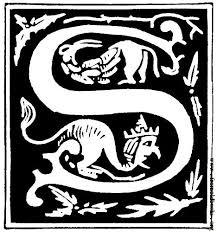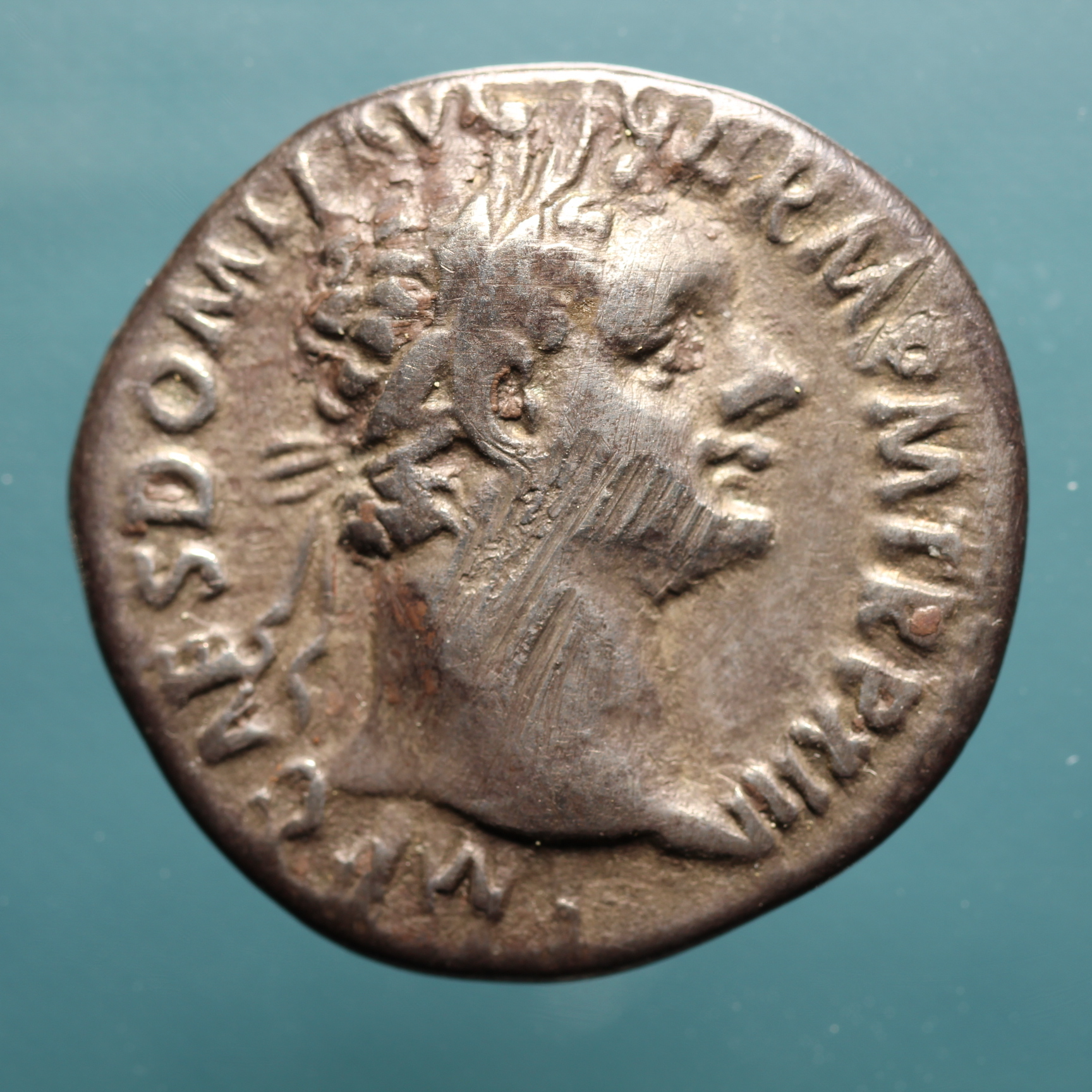 TUDY THE EMPEROR'S facial expression on the obverse of this coin, the Hazelton coll.'s most recent acquisition, RIC 687--
TUDY THE EMPEROR'S facial expression on the obverse of this coin, the Hazelton coll.'s most recent acquisition, RIC 687--


Doesn't it look as though Domitian has just caught sight of some frightful vision, his eyes bulging wide, his lips clamped shut, his head thrown back in speechless terror? If that were his own hair under the laurel crown, it would be standing on end! But why? What does he see?
Now look at the reverse of this coin! Is that it? It's only 89 A.D., autumn to be exact, and Minerva hasn't abandoned him yet, not for another ten years, but doesn't this particular example of the M3 reverse foretell that event? Here is the Suetonius quote I lifted from last week's column--
"...Minervam, quam superstitose colebat, somniavit excedere sacrario negantemque ultra se tueri eum posse, quod exarmata esset a Iove."
He had dreamed Minerva, whom he worshiped with superstitious devotion, abandoned her sanctuary and announced she couldn't protect him anymore because Jove had disarmed her.
Suetonius, Lives, Domitian XV.3
And this one from Dio--
"...τὴν Ἀθηνᾶν, ἣν ἐν τῷ κοιτῶνι ἱδρυμένην εἶχε, τὰ ὅπλα ἀποβεβληκέναι καὶ ἐπὶ ἅρματος ἵππων μελάνων ἐς χάσμα ἐσπίπτειν...."
[Domitian dreamed] Athena, whose statue he kept in his bedroom, threw down her weapons only to plummet through a crack in the earth on a chariot of black horses.
Dio Cassius, Roman History, LXVII.10.1
Isn't this a graphic representation of that event, of Jove's weapon, the thunderbolt, being stripped from Minerva's arms (Suetonius), Minerva throwing down her weapon (Dio)? No wonder Domitian looks scared out of his wits.
Of course it's just a minting error, a double strike. The celator tapped the striking die with his mallet and then, for whatever reason, he tapped it again, the coin having shifted slightly in the meantime, in the interval probably of only half a heartbeat. Tap, tap.
That's all.
Relax, Domitian, relax! No really, dude, chill!
Oh dear! There's something else even scarier going on here, isn't there? Was there a third tap? There was, wasn't there? Is that what's causing you such consternation, my friend?
Look at the obverse side again. On Domitian's throat, right under his chin, there is a line. It looks like part of the portrait, a crease in his skin where the head joins the body. But it's not. It isn't part of the portrait. The engraver didn't put it there.
Readers, I invite you to follow this link to RIC 687's place in the coll. Allow your cursor to hover over the portrait for a moment so that the magnification feature can engage, or else zoom in on the image however your device allows. Then examine this particular line closely: It is a gouge, not a bump. If the engraver had cut a line into the die, the result would have been a bump on the coin, a convexity instead of a concavity. This is an innie, not an outie.
No, somebody else made this mark! Somebody else purposefully laid the edge or a knife or a sword carefully in place and then tapped it with a heavier object to make this mark. When you zoom in you can even see that there were chips on the guilty blade, these imperfections preserved forever like forensic evidence. But why did somebody do this terrible thing to my son's innocent coin?
I'll tell you why: Damnatio memoriae!
Damnatio memoriae, a modern coinage (so to speak), which doesn't appear in the ancient sources; the Romans may or may not have used the term, but it's descriptive enough of the process. After his assassination Domitian's enemies in the Senate passed a resolution that his public existence should be expunged. His name was was to be erased from building inscriptions. The heads on his statues were to be removed and replaced with other heads. Sometimes the faces were simply recarved, as in this example: Here is a snapshot of a bust of Trajan (formerly the bust of emperor Domitian) that I took in the Capitoline Museum on a recent visit to Rome--

It isn't subtle. You can actually see the line around the cheek and chin where the new meets the old. The damage inflicted on the coins wasn't always subtle either. There was a spectrum, subtle to blatant. Here are two denarii in the Hazelton coll., RIC 188 and RIC 763 dup, on either end of that spectrum--


The coin on the right looks like it was scraped on a sidewalk, and that might have been what happened to it; but steel blade or concrete, it was a deliberate defacement.
Only a small, but significant, percentage of the coins in the Hazelton coll. show evidence of damnatio memoriae. It seems odd to me that the percentage isn't larger. It means that most of the holders of these coins, and note that each of these coins would have passed through several hands, defied or at least ignored the Senate's decree. Perhaps Domitian wasn't nearly as unpopular as the Senate would have liked us to believe.
However, it was a majority of the Senate, led, I believe, by Marcus Ulpius Traianus, the father of the future emperor Trajan, who punished Domitian with this post mortem damnatio memoriae. I believe that it was a smaller subsection of this same group, led again by the elder Trajan but including the usurper Nerva and also the emperor's own wife Domitia, who brought Domitian down in the first place, arranging for his assassination.
Perhaps this is what has frightened the face on the coin. Perhaps the face on the coin saw all of this coming. Perhaps it heard the tapping.
Tap, tap . . . tap.
Next: An interesting provincial coin.

